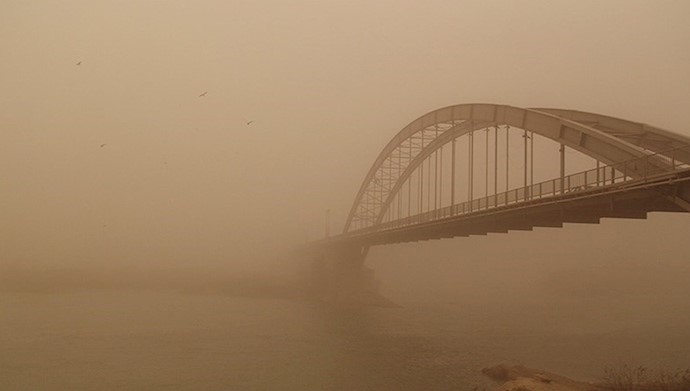Report By PMOI/MEK
Iran, July 28, 2018 – Government bureaus and banks were shut down due to severe smoke from a wildfire in Hoor-Al-Azim wetland. Keep in mind that this is happening in a province, which is used to far-beyond-standard environmental pollutions. The World Health Organization has twice announced in 2011 and 2013 that Ahwaz is the most polluted city in the world. Since then, the situation has only worsened. This year the air pollution of Ahwaz reached the record of 60 times higher than safe levels.
Situated in the southwest side of Howeizeh, on Iran-Iraq border, Hoor Al Azim literally means “the huge wetland.” With an area of 1180 km2, it is the largest wetland in Khuzestan and one of the largest in Iran. It used to be extremely rich in plant and wildlife and enjoyed the international attention. Now, it is on the verge of annihilation.
One of the main elements of this destruction is the Iranian regime’s oil company, breaching rules, regulations, and responsible norms of conduct. They conducted a campaign of drying the wetland. More than half of the Iranian section of Hoor Al Azim has been annihilated. There were dozens of villages on the borders of the wetland who made a living out of the wetland and its aquatics. Drying of Hour Al Azim has resulted in unprecedented haze storms throughout Khuzestan.
The recent fire
In recent days, 150 square km of Hoor Al Azim has caught fire. The tremendous amount of smoke has endangered the lives of children, sensitive population groups, and people with lung diseases. The smoke has reached the Persian Gulf. This is the fourth major fire this summer.
Images of cities with less than 50 meters for the depth of vision and those of burnt livestock are painful reminders of the extent of this environmental crisis. However, what is even more painful is that the recent fire and all other fires during the current year and past years are only small portions of the crisis that is destroying the wetland.
Was Hoor Al Azim’s annihilation foreseeable and preventable?
The regime’s officials did not pay any attention to numerous warnings by environmental experts. In 2012, an academic research conducted by a team of experts warned specifically about building dams that had more impact on the reduction of the wetland’s water than any other single factor. However, since the regime’s officials are the ones whose lands benefit from building these dams, the warnings fell to deaf ears.
On March 2017, in the course of the factional infighting of the regime, some shocking facts were exposed. A member of the city council of Sousangerd revealed that the oil company had conducted a project to dry the wetland so they can extract oil more easily and inexpensively.
The regime’s actions during the recent fire
What would you expect from a regime that has for years attempted to dry the wetland to get more benefits for its oil companies despite numerous expert warnings?
The regime’s actions were comprised of shutting down the banks and government bureaus, as well as distributing masks. They have also reported having sent four helicopters to put the fire out; four helicopters for a fire in an area of more than 1000 square Km. They said they were sending a medical aid bus and that they will speak to the Iraqi embassy and they will coordinate with the Iraqi consulate to ask for help to put out the fire.
Anything else expected from the brutal dictatorship?





